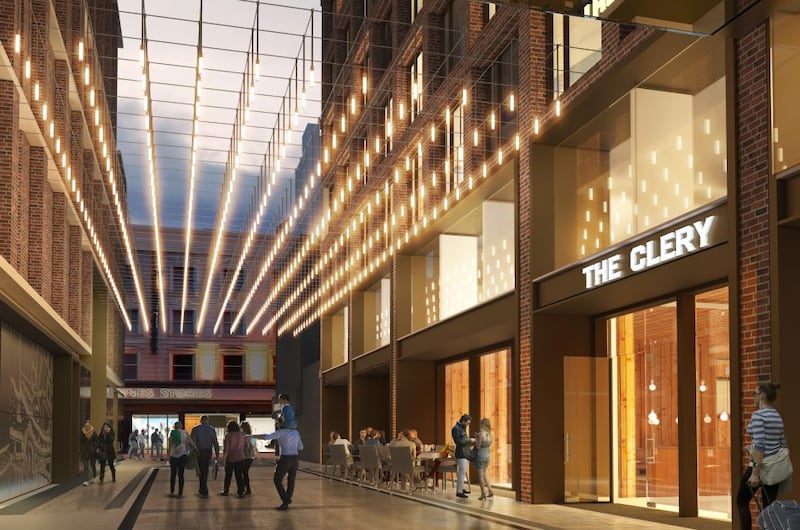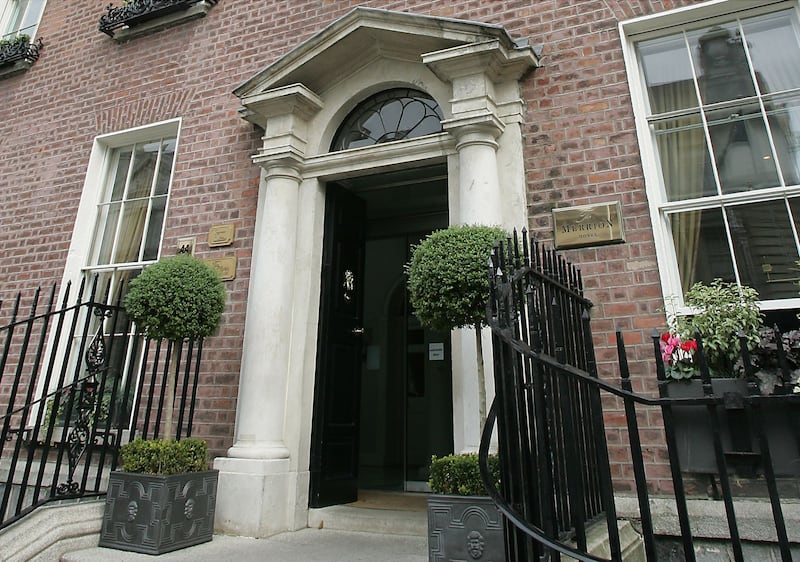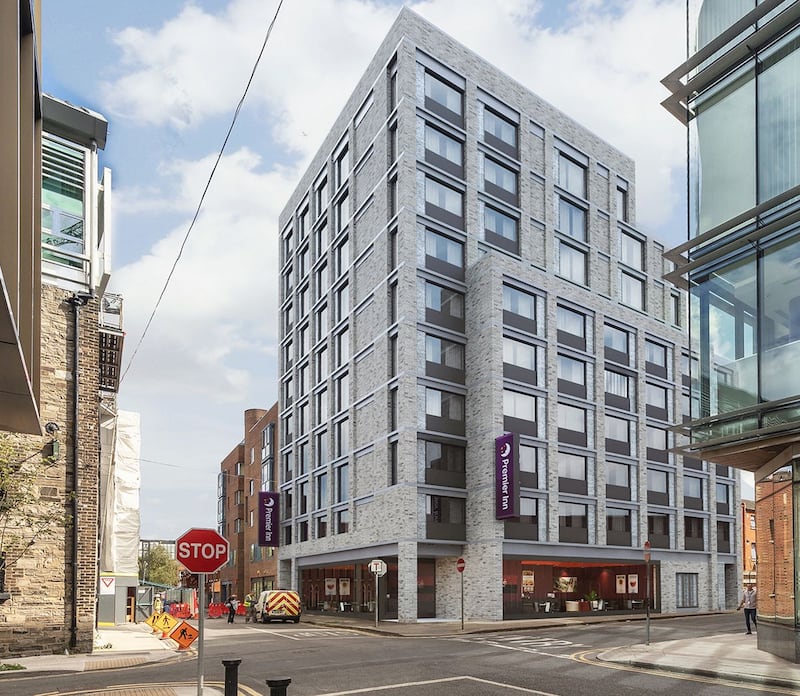“Leaving aside the present and anticipated buoyancy in visitor numbers, however, Dublin’s hotel sector remains no less vulnerable than any other city to both home-grown and international economic shocks, the effect of which could see occupancy levels and room rates plummet overnight.”
When the above sentence was included as a caveat in an analysis of the hotel sector published by The Irish Times on February 8th, few could have predicted that the market would be flattened within weeks by the arrival in Ireland of coronavirus. At that point the virus had barely registered with people here.
Prior to the pandemic any threat to the health of Dublin’s booming hotel sector was expected to be in the ordinary run of the economic cycle, where any fall in demand due to a domestic or international recession would be reflected in an immediate oversupply of hotel rooms.
A high proportion of the new hotel stock will be accounted for by budget and mid-market specialists such as Premier Inn and Dalata. It will invariably be asked whether Dublin needs any of the additional rooms that remain in the pipeline
With a total of 99 hotels, aparthotels or other forms of guest accommodation either the subject of a planning application or under development across Dublin’s four local authority areas at the outset of this year, the capital had already been looking at an extraordinary increase in its existing stock of 250 hotels.
In terms of additional rooms, an analysis by real estate adviser JLL suggested that the 24,000 rooms already available in the city would be supplemented by a further 3,600 by the end of 2020, and another 2,400 by 2022.
Following the outbreak of Covid-19, it has revised its overall projection downwards by 16 per cent from the 6,000 rooms it had been forecasting to 5,000.
Among the hotels still scheduled for completion this year are the Wren Hotel (137 rooms), the Staycity aparthotel on Mark Street (159 rooms) and the Hendrick Big Tree (163 rooms).
Ten hotels, including the Holiday Inn Dublin Airport (421 rooms), the Hampton by Hilton Four Courts (249 rooms) and the Maldron Tara Towers (140 rooms) are scheduled for delivery in 2021, while a further 12 hotels are due to come on stream in 2022.
The 2022 stream include the Clery Hotel (213 rooms) at the new Clerys Quarter on O'Connell Street and the Leinster Hotel (53 rooms) on Lower Mount Street, both of which are being delivered by developer Paddy McKillen jnr and Matt Ryan's Oakmount Group, and three Premier Inns located on Gloucester Street (108 rooms), South Great George's Street (97 rooms) and Castleforbes Business Park (263 rooms) respectively.
While the new number is still significant, it’s worth noting that around one third of the rooms JLL now expects to see delivered will be located in aparthotels, which typically cater for longer-term business visitors as opposed to tourists.

Also notable is the fact that a high proportion of the new hotel stock will be accounted for by budget and mid-market specialists such as Premier Inn and Dalata, as opposed to companies catering for the five-star or luxury market. This should offer the owners of existing five-star hotels some consolation as they await the return of the high-spending international guests that make their businesses profitable.
Given its current moribund state and the likelihood of a slow recovery, the question will invariably be asked as to whether Dublin needs any of the additional rooms that remain in the pipeline. Ultimately, the answer could be “yes” despite the severity of the damage Covid-19 has dealt to the existing tourism market.
That damage is significant. JLL estimates that between 25 and 50 of the city’s current complement of 250 hotels may never reopen, while the ones that do will require a combined injection of up to €500 million to get their operations up and running.
One factor that may favour of the hotel sector is the hit that the AirBnB short-term stay model has already taken from Covid-19, and may continue to contend with long into the future.

Yet while the potential threat to AirBnB and similar operators might provide something of a boost to the hotel sector, those at the coalface, such as Dalata Hotel Group chief executive Pat McCann, are under no illusion as to the extent of the challenge hoteliers will face as they look to claw back the losses incurred in the course of the Covid-19 pandemic and its aftermath.
Asked how long he believes the recovery will take, McCann says: “For 2020 any recovery will be driven by the domestic market, because obviously we’re very dependent on international business travel. Hopefully that will happen again at some point.
“In 2020 we’ll have very few events, so we won’t have any of those large movements of people that are good for the business. 2020 will be driven by domestic leisure and domestic corporate, and then as we get into 2021 we would hope to see a recovery driven by the events that were cancelled in 2020. That would give us impetus for 2021.
“Then as we get into 2022, we see something of a return to normal trading from a domestic and international point of view. That’s how we see it playing out.”
Yet however confident the Dalata chief is in relation to the path his company will follow, he believes others will not be so fortunate.
“It’s probably pretty evident at this stage that a lot of hotel operators have run out of cash. The biggest challenge they will have as we go through this year is that hotels won’t be able to generate enough cash to survive through the winter. This started at the worst time for hotels, coming into the month of March where they start to build up their cash reserves. That hasn’t happened this year.
“There will be a need for liquidity support from government so businesses will have some chance of survival.”

Asked for his view on the current pipeline of new hotels, and the future prospects for hotel development in Dublin, McCann is pessimistic.
“If things haven’t started [on site] now there’ll be a substantial fall-off in new builds because they simply won’t get the funding for it. Getting the funding before [Covid-19] was challenging enough. That funding will have disappeared by now. Even on sites that have started, where there’s a minimal amount of work done you’ll probably find that they won’t be completed because the market simply isn’t there to support new developments.
“I would see a marked reduction in the development of new hotels for probably many years to come.”
As sobering as it may sound, however, the Dalata chief’s assessment won’t overly concern the international investors who acquired several of the capital’s highest-profile hotels last year. Well-capitalised and focussed on securing a long-term as opposed to short-term return on their investment, the negative financial impact of recessions and even once-in-a-century phenomena such as the pandemic are accounted for in their calculations.
As grim as things might be right now for the wider hotel sector, in time this period will come to be recorded in the industry as dispassionately as the global financial crisis of a decade ago
Included in the major deals in 2019 were: the €134 million sale of The Marker to German investor Deka Immobolien; the €116 million sale of the Conrad Dublin to Archer Hotel Capital; the €50 million sale of Portmarnock Hotel & Golf Links to Canadian-headquartered Northland Properties; and the €40 million sale of The Central Hotel to Deutsche Finance International.
But as grim as things might be right now for the wider hotel sector, in time this period will come to be recorded in the industry as dispassionately as the global financial crisis of a decade ago.
On that occasion Europe’s hotel markets recovered to differing degrees and at varying speeds between 2010 and 2014, according to the data compiled by global hospitality research specialist STR. London, unsurprisingly, was the first city to rebound in 2010, with Paris, Munich and Amsterdam emerging from the doldrums soon after.
Dublin, for its part, posted significant declines in RevPAR (revenue per available room) in 2009 and 2010, before registering a strong and consistent recovery between 2011 and 2014.
It took time: STR found that just six of the 12 major European cities – namely London, Paris, Berlin, Munich, Dublin and Lisbon – saw their average room rates exceed pre-crisis levels by 2014.
I'd expect domestic leisure demand to return first, followed closely by domestic corporate demand. There's already evidence that domestic leisure demand returned first in China
This time round the recovery in the Irish market may well be led by the countryside as opposed to the capital, according to Dan O’Connor, vice-president at JLL’s hotel division. With overseas visitors having accounted for up to 80 per cent of Dublin’s tourism mix prior to the Covid-19 lockdown, as opposed to the range of 52 per cent to 65 per cent Failte Ireland attributed to the south, mid-west and western regions, O’Connor echoes Dalata chief Pat McCann’s assertion that the recovery will be driven by the domestic market.
“I’d expect domestic leisure demand to return first, followed closely by domestic corporate demand. There’s already evidence that domestic leisure demand returned first in China, with various Chinese resorts now experiencing spikes in weekend occupancy as holiday-makers return.
“Ironically, Wuhan is now posting the highest occupancy rates in the world. Unfortunately, both international leisure and international corporate demand will take much longer to recover,” O’Connor says.
For now he believes the Government will continue to be the biggest driver of demand for hotel accommodation in the Irish market through the thousands of hotel rooms it occupies in Dublin through the HSE and other State bodies such as the Housing Agency, the Department of Justice and local authorities.











